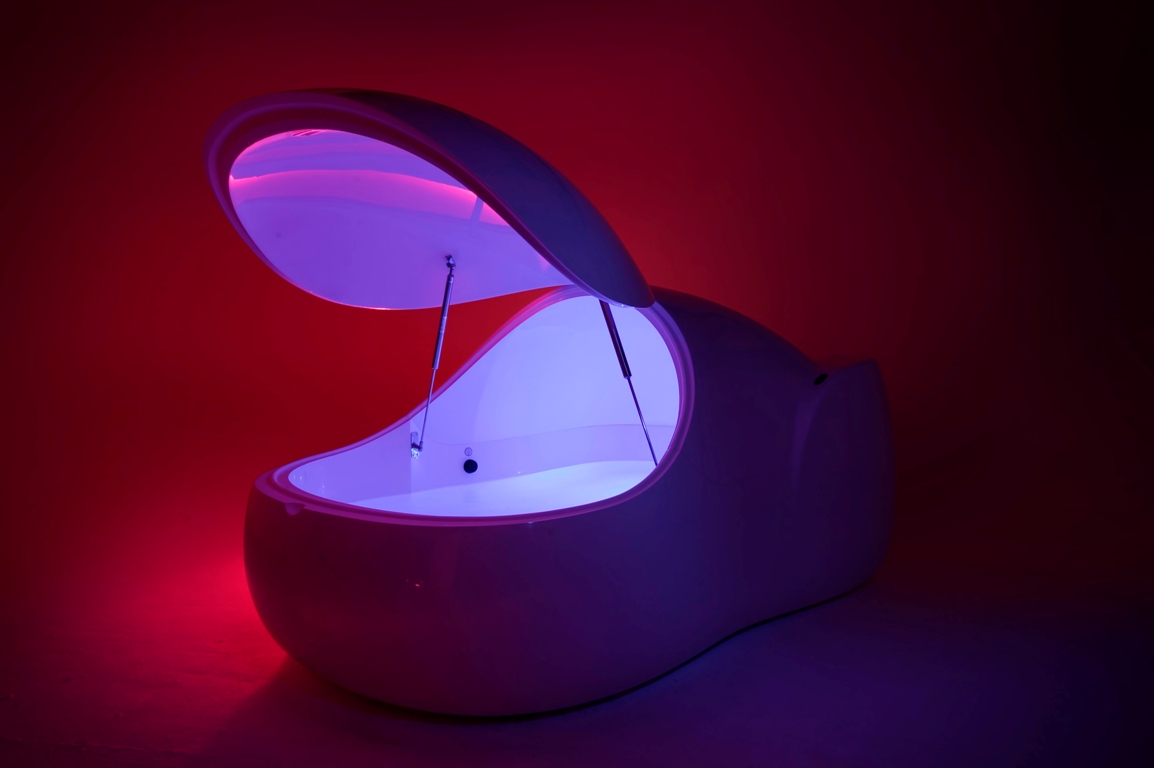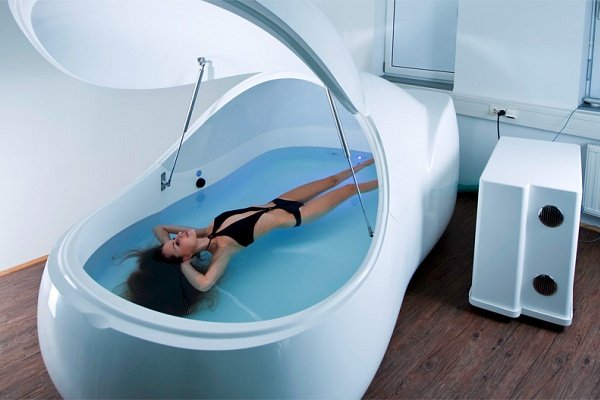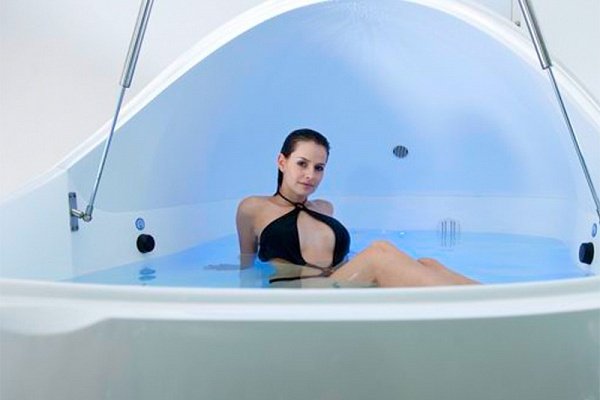05 October 2020, by i-sopod
We’ve come a long way in the west over the last decade or so from viewing meditation as a niche activity which most people thought ‘wasn’t for them’, to now widely seeking ways to incorporate mindfulness into our daily lives. Meditation apps, yoga and meditation classes and sound healing are now commonplace for many of us.
If you’re new to meditation, however, it’s easy to have big expectations and find the whole thing, well, a bit daunting.
You want to achieve that sense of calm and grounding, you’d love to feel more balanced and have a bit of distance from your emotions… but sitting cross legged in total quiet for 10, even 5 minutes can be absurdly difficult to do when you’re first trying it.
The meditative qualities of floatation are well known and appreciated by those who regularly float, and can also be an incentive for meditation beginners to try float therapy for the first time, for a potential shortcut to meditation.
How Sensory Deprivation Helps You Get Into A Meditative State
Float therapy, known as REST (reduced environmental stimulation therapy), reduces stimulatory input to the nervous system through floatation in a pool of water saturated with Epsom salts.
The entire experience is calibrated to minimise any external stimulation. Visual, auditory, thermal, gravitational – all forms of stimulation from the outside world are peacefully sealed out of the pod.
A float tank (aka sensory deprivation tank) is essentially designed to provide a meditative experience. As the mind is always looking for distraction to project its emotions and thoughts onto, in a float tank, the lack of distraction gives us the perfect starting point for a meditation practice.
Having no external stimuli, your senses are able to withdraw and your gaze turns inward.
Back Pain When Meditating? Discover The Ease of Zero Gravity
Meditation can be difficult at first not only mentally, but also physically. Taking the traditional meditation position – or any seated position for a prolonged time – the aches and cramps that arise in the body become a source of pain and discomfort which lead to mental distraction.
Many people experience recurring back pain when meditating. And as soon as your mind wanders into wishing the aches and pains would stop, you’ve wandered away from the present moment.
Whilst some teachers and gurus will tell you this in itself is valuable lesson of meditation: learning to accept the physical discomfort without getting mentally consumed by it – a real challenge!! The discomfort that comes with seated meditation definitely makes the practice a lot harder when you’re first starting out.
In a floatation tank, you experience zero gravity. The high density of Epsom salts make your body feel completely weightless, while you transcend to a place of total relaxation. You can quite literally feel the tension leaving your body.
This means, without the pain and tension, it’s a lot easier to calmly observe your thoughts from a place of presence and stillness, and for a longer period of time than you might manage initially in seated meditation.
Checking In with Yourself: Why Is It So Hard?
If you’ve never floated before, and the idea kind of scares you, and if you’ve tried some more conventional mindfulness routes but with no luck, it might be worth digging a little deeper to understand that lingering resistance – as it could be exactly the reason why you would benefit from floatation…
Addicted to being busy?
These days we’re so dependent on external stimuli to keep us ticking (how many times do you check your phone a day?) that the daily bombardment of stimulation we live with actually becomes a way to numb ourselves to what’s really going on inside.
This is why the idea of first entering a float tank can be daunting; ultimately, the idea of being shut off from all distractions and alone with yourself, and with your thoughts, can be an unnerving one.
This anxiety is very common. And yet, when we’re faced with fear or resistance before a new experience, it’s often an indication that it will actually be worthwhile, as overcoming and facing fear is what allows us to grow.
Many first time floaters who go in with this niggling fear come out glowing. The float tank is a sanctuary of sorts… You become so relaxed that you’re able to deal with the thoughts as they surface from a more controlled and calm perspective.
Whether or not you are actively looking to meditate whilst you float, the pod offers a great opportunity to tune out from the world and check in with yourself.
Solitude is an important aspect of any mindful practice; even if you’re meditating in a room full of people, the aim is always to go inward and essentially be just with yourself.
The intention of floatation is to create a space for peaceful solitude, and the isolation tank provides the ideal setting in which to just switch off and reconnect with yourself.

3 Meditation Tips for Floaters
Here are some simple meditation techniques you can incorporate into your next float, to enhance your experience and weave in some mindful qualities. If you’ve never tried meditation in a conventional setting, or you’re a beginner starting out, you might find these simple exercises are actually a lot easier than you would expect when practised in a float pod:
1. Focus On Your Breathing
Coming back to the breath brings you to the present moment almost effortlessly. It’s a lot easier to focus on your breathing whilst you float. Wearing earplugs means you’re a lot more tuned into your internal sounds, like your breath and your heartbeat.
- Breathing through your nose, pay attention to your inhale and your exhale.
- Then, inhale slowly for a count of four, and exhale for the same amount of time. Gradually you can increase the count, and observe the relaxing effect it has on your entire being.
2. Feel Your Body
Start to observe your physical experience through your breath. Whilst you’re in the tank, you will become more aware of your body and areas of tension as they slowly loosen up in the salts.
- As you inhale, direct the breath to an area of your body where you feel tension, and as you exhale slowly, feel that part of the body gradually softening and the tension leaving. You can also observe how much lighter you feel with every exhale.
3. Try Some Visualisation
Visualisation is an effective way to access inspiration, creativity, or even resolve problems. There are many different methods of visualisation, but here are a couple to try:
- Start with a positive affirmation, i.e something you could do with telling yourself more often. An example: ‘I am resilient’. Picture the words and picture the impact that affirmation is having on you and on your life…
- Visualise that as you inhale you’re flooding your body with light, and as you exhale all stress and negativity is being released in clouds of dark smoke.
Floatation Is Not A Free Ticket To Nirvana… But It’s a Good Place To Start Your Journey!
We’re not claiming that floatation is a fast track to nirvana. Meditation is a practice, therefore not something we can ever achieve fully, and as such it will always be challenging, no matter how experienced you are.
However, the environment of a floatation tank is the perfect setting in which to first try turning your gaze inwards.
Science Proves That Floatation Can Get You There!
It’s been proven that floating can actually put the brain into a temporary rest by inducing theta brainwaves, which cause a ‘slow activity’ theta state in the brain between the conscious and subconscious mind, which is known to be a deeply healing, relaxing, and focused mental state.
A Zen Buddhist monk who meditated daily for 4-5 hours for many years once tried an hour in a float tank, and said that the experience was on par with the state he only entered after many hours of meditation. Traditional meditation practice can also induce a theta state in the brain, however it can take a lot more time and practice to get there.
If you’re interested in reading more about floatation, here’s an article about how floating affects brain function, and here’s a good 101 on how float tanks work.
Whilst floatation is no substitute for a meditation practice, it can definitely be a good way to complement it, and even a useful gateway to starting meditation.
Photos by Mike Labrum and Javardh on Unsplash






